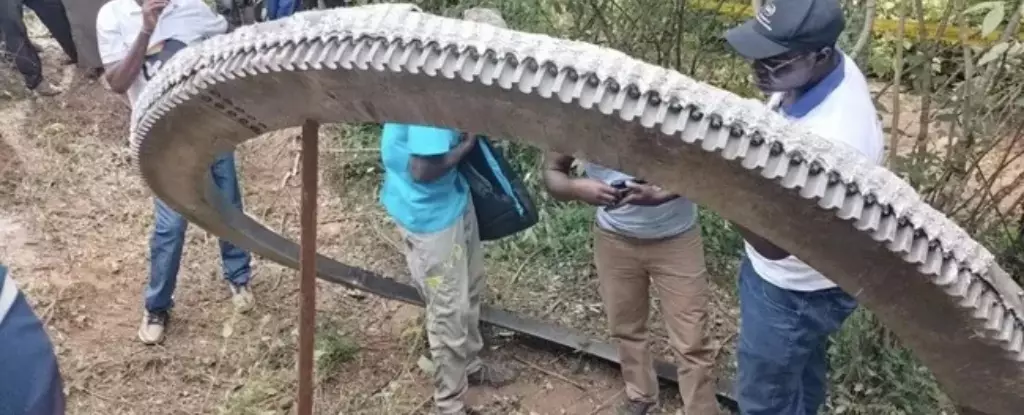On the fateful Wednesday afternoon, the tranquil life of Mukuku Village in Kenya was abruptly interrupted by an astonishing spectacle from beyond our atmosphere. By approximately 3 p.m. local time, a massive metallic object—an impressive 8 feet in diameter and weighing an estimated 1,100 pounds—plummeted from the skies, ultimately crash-landing into the village. The Kenya Space Agency (KSA) promptly issued a statement confirming the event, assuring the public that, despite the considerable size of the debris, no injuries were reported and that the incident did not present an immediate threat to the residents.
Such an occurrence is an eerie reminder of the lingering remnants of humanity’s quest to explore the cosmos. Maj. Alois Were, a representative from the KSA, indicated the object’s potential origins as a “rocket separation stage.” This classification underlines the complexity of tracking and managing space debris, which often defies our anticipation and control.
The incident in Mukuku Village is not an isolated occurrence but rather part of a much larger, increasingly concerning phenomenon: the proliferation of space debris. This accumulation of defunct satellites, spent rocket stages, and various fragments hovers ominously above our heads, posing risks not just to space missions but also to life on Earth. Given the uptick in space missions—from a modest average of 82 launches per year between 2008 and 2017 to a staggering 250 in 2024—the potential for accidents and falling debris is on the rise.
Space agencies globally are grappling with how to handle this growing dilemma. The KSA is currently collecting fragments from the Mukuku impact site for forensic analysis in hopes of tracing the debris back to its owner. Once identified, it is probable that legal frameworks established under international law will be employed to address accountability. This is a crucial step, as ensuring responsibility in space operations is vital to maintaining sustainable practices amidst an increasingly cluttered orbital environment.
Historical Context: A Legacy of Risk
The journey of objects from space to ground has a history interwoven with risks and close calls. Despite the high stakes, there has yet to be a fatal incident directly linked to space debris. The closest brush with disaster unfolded in March when a small piece, roughly the size of a soda can, fell from the International Space Station and narrowly missed striking a home in Florida, leading the impacted family to pursue legal action against NASA.
In a similar vein, it’s worth noting the 2024 incident in North Carolina where a significant chunk of SpaceX debris landed perilously close to hikers enjoying the mountains. Such occasions serve as poignant reminders that our ventures into space come with unexpected repercussions that can manifest in the most unsuspecting places.
As the ambitions of space exploration progress, so too must our preparedness and environmental stewardship. The burgeoning issue of space debris extends far beyond a few scattered fragments, manifesting a dire scenario. According to physicist Thomas Berger, the situation has reached a critical juncture, where around 1,000 alerts regarding possible collisions are issued daily. This exponentially rising complexity raises the frightening prospect of a catastrophic incident—a chain reaction of collisions that could essentially render certain regions of outer space unusable.
The Mukuku Village incident is a wake-up call, urging international spacefaring entities to rethink their approach toward debris management and prevention. Enhanced protocols and innovative solutions are required to tackle the challenges presented by space waste, safeguarding both humankind and our celestial endeavors.
The metallic ring that descended upon Mukuku Village may just be a singular event within a broader narrative of space exploration, but it symbolizes a pressing need for a concerted effort towards sustainable practices in space travel. As technology continues to advance, the onus is on space agencies and governments worldwide to prioritize safety and responsibility in order to navigate the complexities of our shared journey into the cosmos, ensuring that Earth—and space itself—remains a hospitable environment for generations to come.

